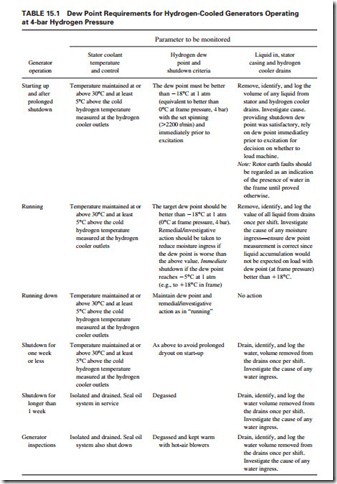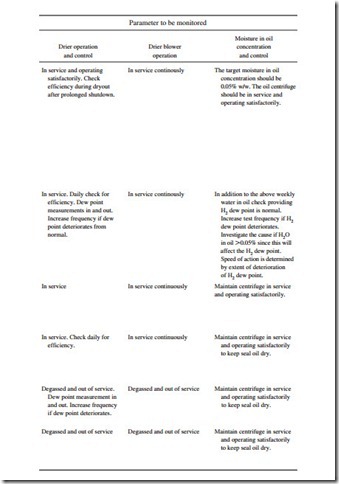OPERATIONAL LIMITATIONS
Temperatures
The temperature of the generator components and the cooling fluids’ inlet and outlet temperatures are monitored and recorded. It is essential to maintain the stator coolant water below the boiling temperature. The highest core temperatures occur at the ends of the core. These temperatures are also monitored to prevent either core or conductor bar insulation damage.
The maximum temperatures occur at the highest leading power factor because the excitation current and resulting flux would be at their highest values. Thus, the core end temperatures can be reduced by operating the generator at a more lagging power factor. However, the fluxes and terminal voltage are reduced when the generator is operated in this mode. In summary, the leading power factor capability and the terminal voltage of the generator can be restricted if hot spots are identified, in order to keep the generator online.
Hydrogen Leakage
A hydrogen leakage from the generator can cause an explosion and fire. An explosive mixture is formed when the concentration of hydrogen in air is between 4 and 76 percent. Hydrogen leakage from the generator should not be tolerated. Hydrogen leakage detectors are used to alarm this condition. The unit should be shut down when the hydrogen leak exceeds a specified limit. The hydrogen pressure in the generator can be reduced under emergency conditions to reduce the hydrogen leakage from the casing. However, the hydrogen pressure should always be maintained at a higher value than the water pressure in the windings. Thus, the water flow should be decreased in some cases to maintain an acceptable pressure
be regarded as an indication of the presence of water in the frame until proved otherwise.
hydrogen temperature measured at the hydrogen cooler outletsdifferential between the hydrogen and the water. Therefore, the generator rating should also be decreased.
A generator with hydrogen-only cooling can be derated due to a decrease in hydrogen pressure to the extent that it can be operated in air at 1 atm (1.03 bar). Its apparent power rating in this condition will be around 60 percent of the rating in hydrogen. Figure 15.4 illustrates the derating of a generator due to a reduction in hydrogen pressure.

